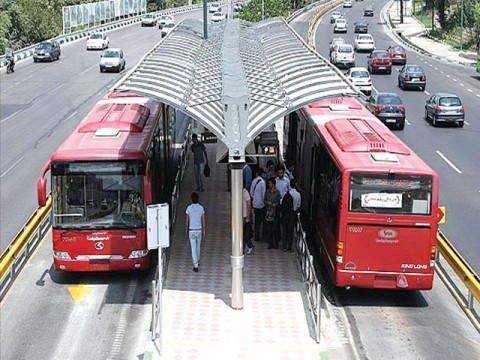The Economics of Infrastructure Development
Imran Khan, leader of the party governing a province of Pakistan, has stated on record numerous times his astonishment on the current government’s disproportionate focus on infrastructure. He once said, “development does not mean just construction of roads and bridges” and also, “Malik Riaz (the real estate tycoon) should be Prime Minister of Pakistan if only construction of bridges and roads is meant development of any country.” Coming from a leader of his prominence and standing the statements represent a policy statement and give an observer all the more reason to take them rather seriously. It is exceedingly pertinent to understand the role that infrastructure can play in development policy and also dispel any myths surrounding it.
In definition of urban studies a city exceeding the population of 10 million is called a megacity and is a rarity on this planet. As of 2015 there are a total 36 megacities in existence and two of these 36 cities are Pakistan’s industrial hub Karachi and the Punjab’s provincial capital Lahore. Among all these gargantuan urban centers Pakistan’s two megalopolis fare the worst in terms of modern mass transit systems and well spelt out policies managing the traffic in these cities. How these colossal urban centers come to such a stage where they are becoming unmanageable is beyond the scope of our current undertaking. The fact is that there is a pressing and urgent need to fix the mass transit systems and roads, flyovers, signal-free corridors and subway systems are an integral part of that.
The whole industrial enterprise of a developing country like Pakistan is inclined to reap the benefits of agglomeration of economies by situating in the already crowded urban centers. In order for a more evenly distributed growth of industries and subsequently our urban centers there is a need to understand the thinking that goes behind industries forming industrial clusters in already packed urban spaces. First, the industries while being situated in these centers can develop forward and backward linkages in the whole value chain with other relevant industries. Secondly, the utilization of an already developed human resource pool in the urban centers is an important consideration. Lastly, the enterprises expect to learn the about the technological or organizational evolutions including new best practices of the industry and close proximity and shared pool of networks helps them achieve that.
The industries in order to expand to lesser developed areas have to trust their rivals, competitors and associated firms for collective action in terms of developing requisitely trained human resource pool and infrastructure to connect to the markets. They do not usually do that because the first mover tends to lose out because followers gain through the achievements of the first mover. This is often called the rationality of irrationality where all the companies end up not expanding to possibly fruitful ventures. The governments usually have to intervene for this collective action and build required infrastructure capacities linking all the companies to their markets. The positive externalities, the spillover benefits, of these public goods like infrastructure, sewage and public education are then enjoyed by the corporations.
The current government in its policy of developing infrastructure within the metropolitans and between them is theoretically doing an acceptable job or at least heading in a right direction but still we cannot see a more evenly distributed industrial growth. It is a very valid observation because even though infrastructure is a crucial determinant of the above phenomenon taking place but it is not the only one. As mentioned above, industrial cities (clusters) being setup should have the relevant industries clustered together for convenient forward and backward linkages. Government’s policies in this respect are almost non-existent. Random unassociated firms would not move into a same location. The uplifting of human resource quality of a certain region, that is intended to be developed through the given policy, should also be on the policy plan because a well-equipped and healthy resource pool would attract the industries.
It has also been observed and noted in an urban development economic theory that the crossroads of numerous major roads provide the most conducive space for new urban centers to spring up. Some modern cities throughout the world have been observed to follow this pattern.
Hence, the importance of infrastructure cannot be understated in terms of relieving the current megacities from some of the migratory burden by the development of alternative urban centers. A lesser pressure on the big metropolitans would make them safer, economically vibrant and thriving industrial centers. An extensive infrastructure would also ensure an evenly distributed and inclusive development for much of the country.
The views expressed in this article are those of the author and do not necessarily represent the views of CourtingTheLaw.com or any organization with which he might be associated.


